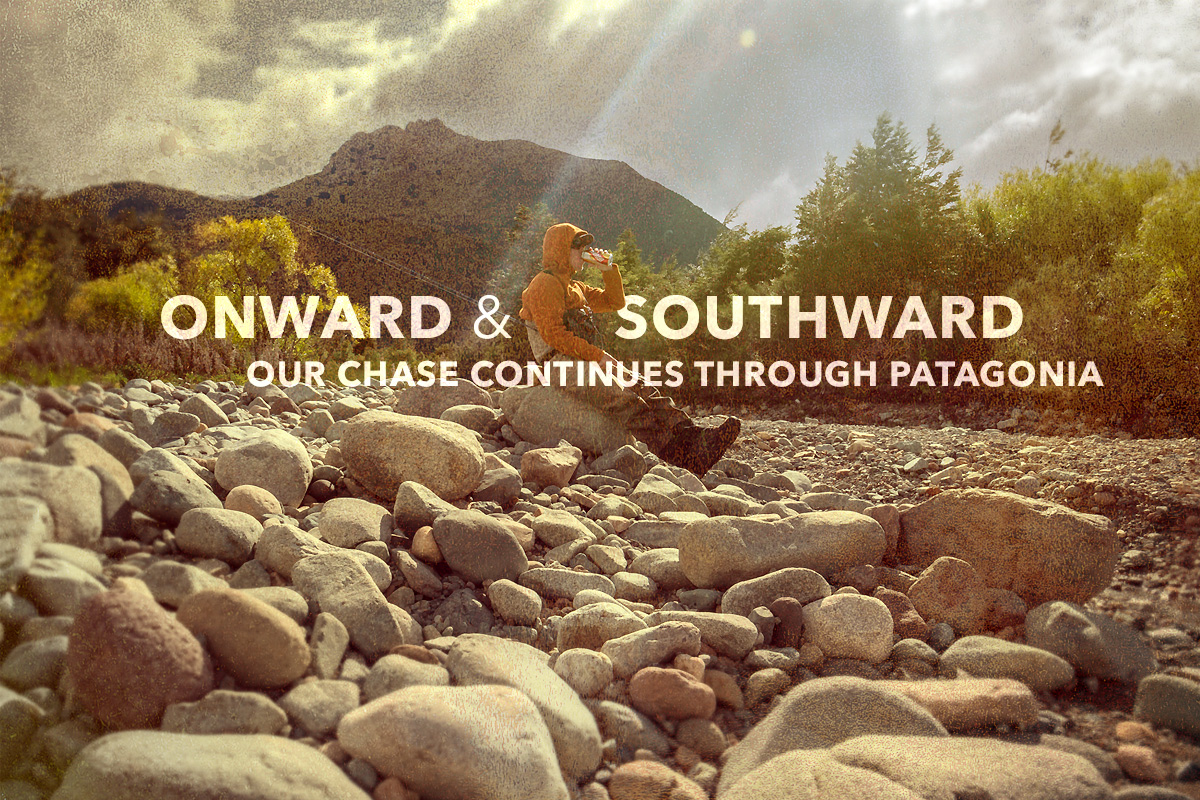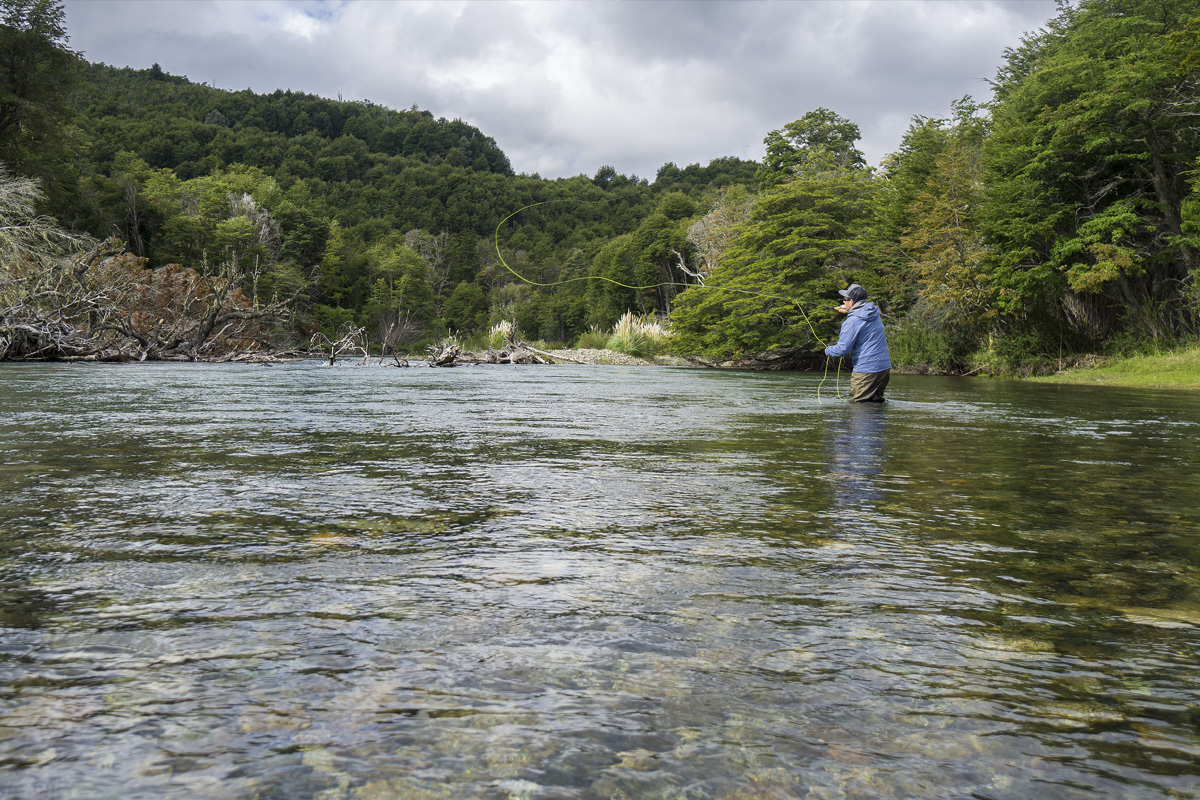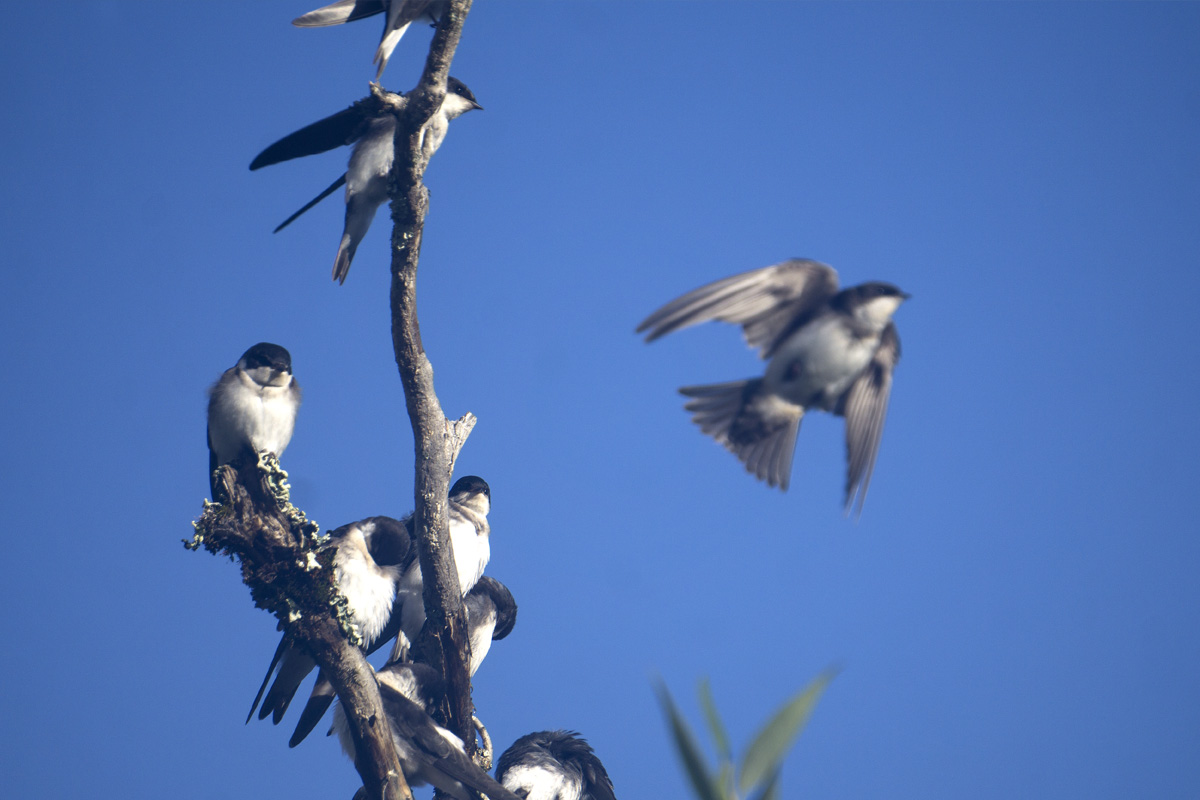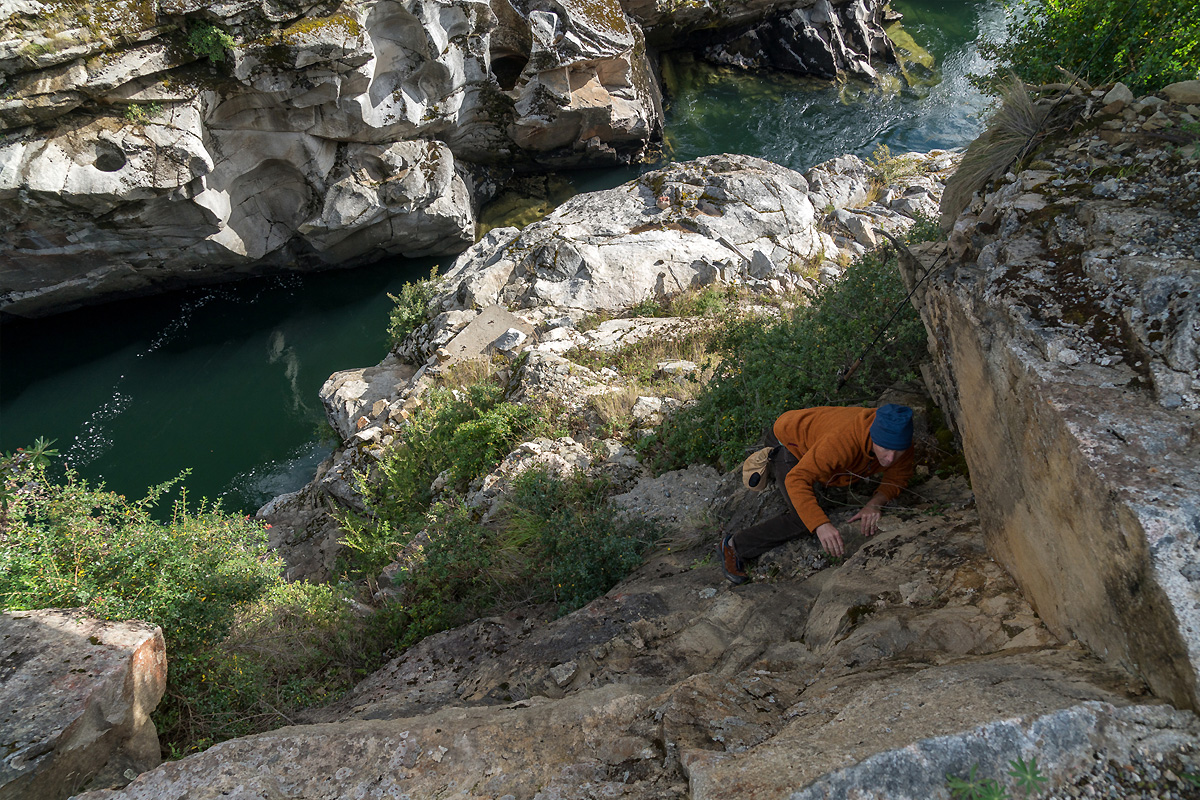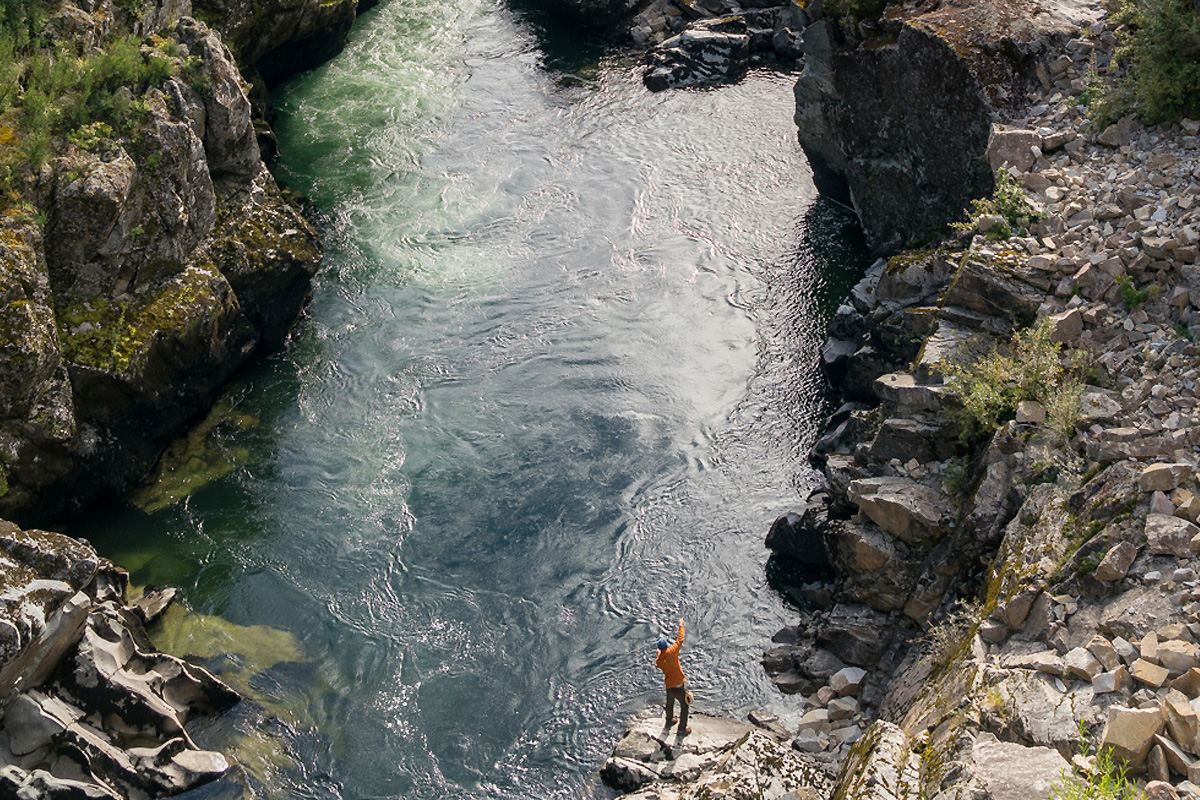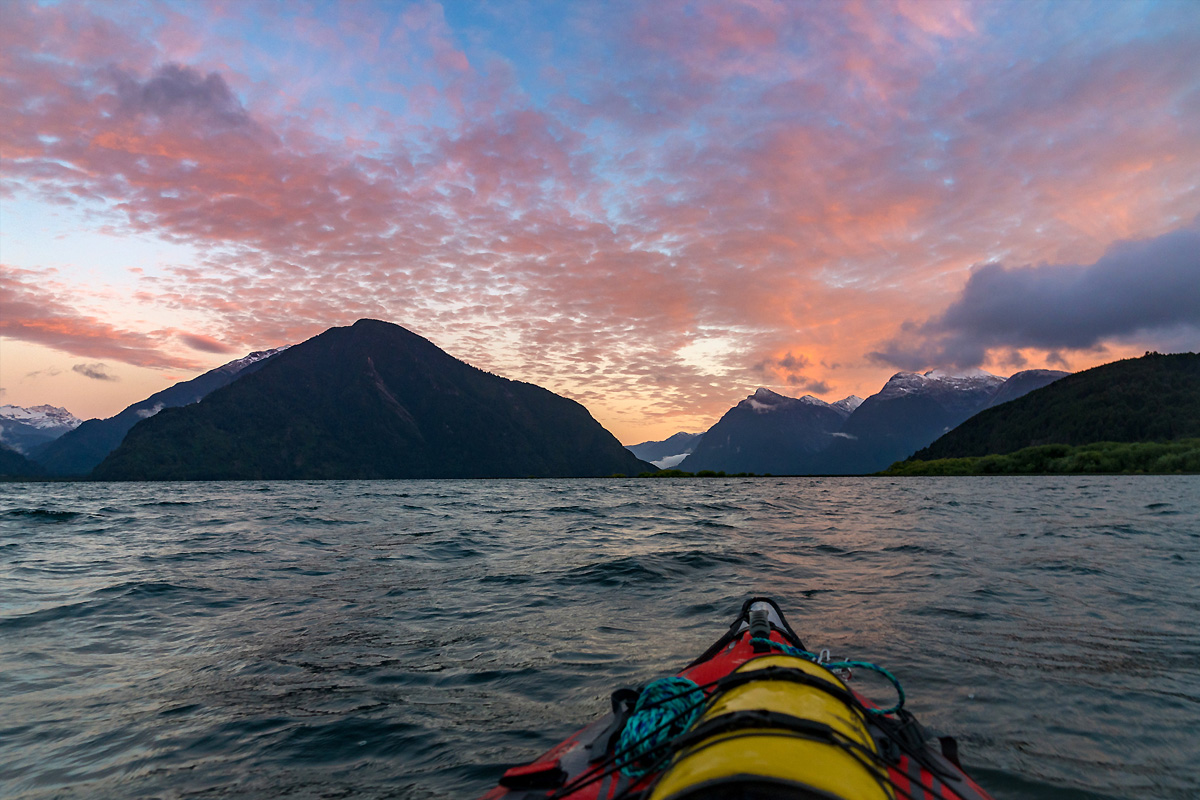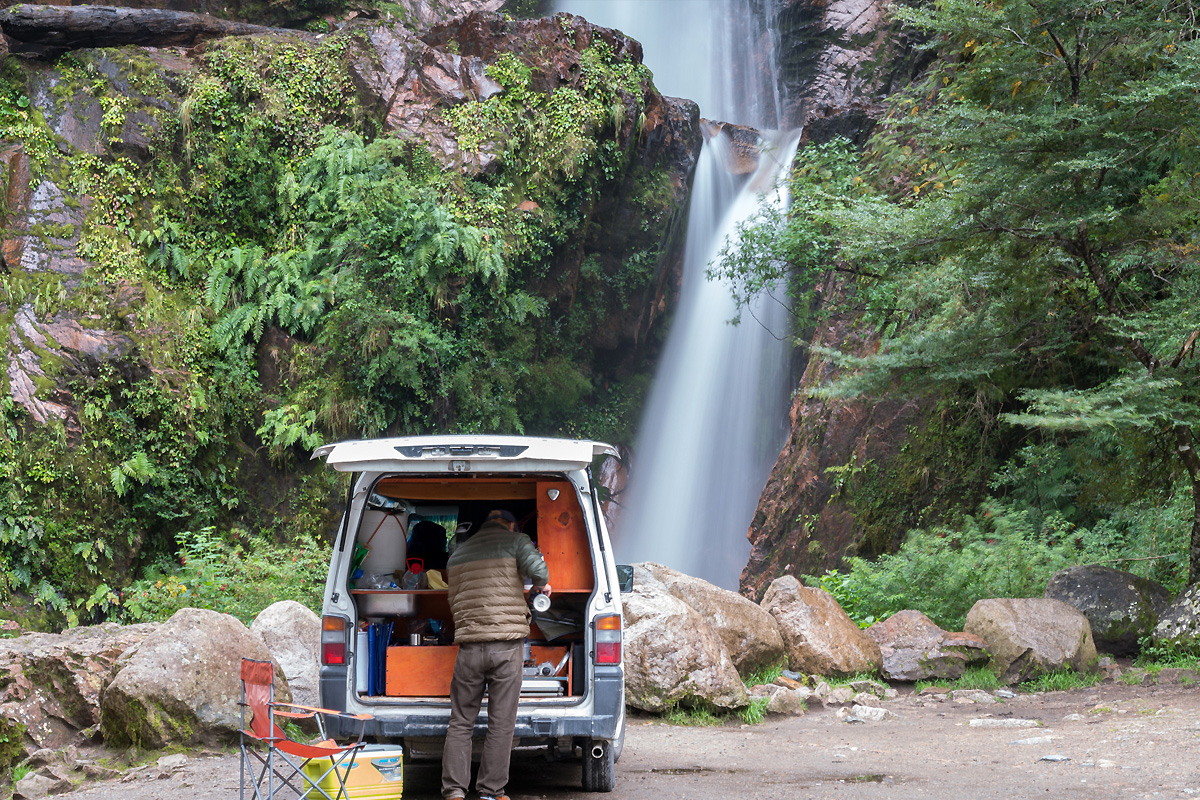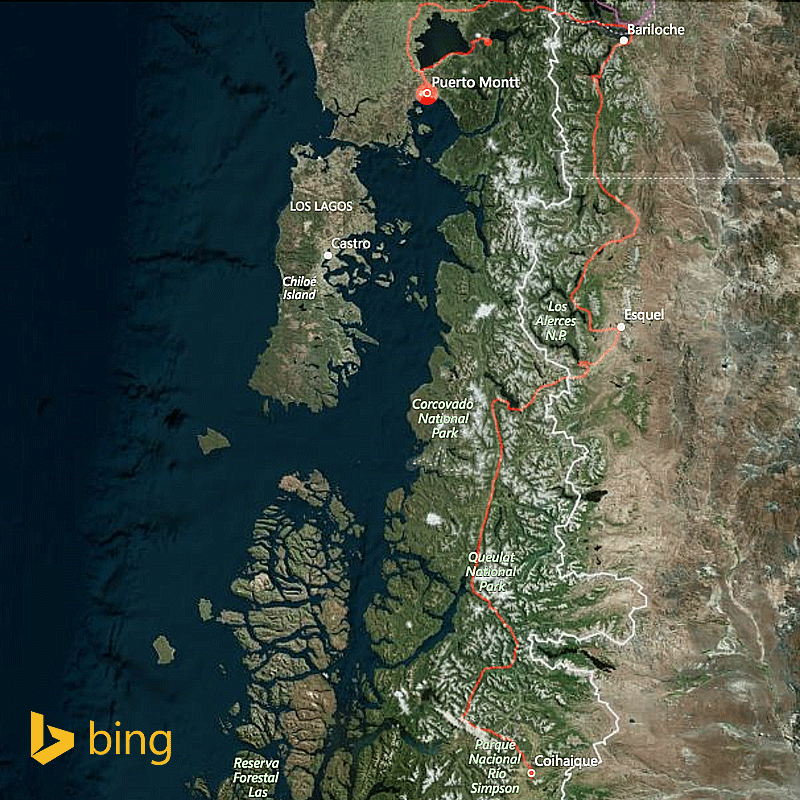Onward and Southward: Our Chase Continues through Patagonia
Fly Fishing Patagonia Road Trip Adventure Part 3: Onward and Southward
Fly Fishing Patagonia Road Trip Adventure: Our chase continues through Patagonia
Fly Fishing Patagonia Road Trip Adventure. Well, I’m just gonna come out and say it: Patagonia is a pretty nice place. More specifically, it might just be the best place. It’s a place of wonder, limited only by the great oceans flanking its periphery. Defined in just a few words: jagged canyons and sweeping valleys… craggy horns and weathered domes… parched steppe and muddy escarpments… fair skies and wicked weather… untamed rivers and placid lakes… golden brown trout and flashing rainbows… washboard roads and butter highways… cramped spaces and questionable body odor. Yes, this is living Patagonia through our eyes. (And yes, that was more than just a few words.)
With the heaps of pre-trip planning under our belts you’d think we would have hit the ground running. T’was our goal. We flew into Puerto Montt and were thrust into an exciting, new abyss—a place we had never been before. It felt like we were trying to control something that could not be controlled. It really wasn’t until our fifth day as we departed the Argentinian town of San Carlos De Bariloche that we finally let go of the controls and could feel our feet beneath us for the first time. Had we reached a sort of homeostasis on the road in Patagonia? Rhythm is not something simply given to you on a journey like this. It takes time to find it. So, why now? Why, after 5 days, have we ironed out the kinks? Is it that this mysterious world has finally divulged the extreme topography that’s been hiding behind the misty grey veil of stormy weather? Seeing is believing. We’ve definitely gained a much better sense of “place” now that we can see, first hand, the beautiful landscape that the internet had advertised. Maybe it’s because we’ve sifted through the logistics “junk drawer” and have organized a quasi plan-of-attack for this southbound itinerary. Or, maybe it’s simply because Bariloche provided the first hot shower either one of us have had on this first of many soggy weeks on the road (not to mention the myriad of flights just to get here from the States). There’s magic in a hot shower. For me, it definitely helped to wash away mental blockages and unwanted travel residue. With all that said, leaving Bariloche behind felt like we had officially turned the final page of the first chapter.
The Lake District of Argentina held true gems, the likes of which I had never beheld. We hit Parque Nacional Nahuel Huapi and fished Lago Guillelmo and Lago Hess. Hess was a dream, one I didn’t want to wake from. Its location, however, is a bit of a tangent from the main route heading south, but well worth it. A day and a half on Hess gave us a pretty good beat on the patterns of fish activity. Big pre-spawn browns, hefty rainbows and even a decently-sized brookie found their way into our cradling hands. With time against us, we yanked ourselves from that wondrous dream and shot down to Lago Verde and Lago Futalaufquen in Parque Nacional Los Alerces. These lakes are situated south of the town of El Bolson and just west of the town of Esquel (both great little towns for re-stocking provisions). We launched the yaks onto Lago Verde and did a one-way mini expedition across its turbid waters, then down a narrow cut, and finally into Futalaufquen proper. We fought wind and rain most of the way while landing both brownies and bows. After draining and deflating the water-logged boats we left the Park and crossed the border (our second crossing) back into a rain soaked Chile. The mighty Rio Futaleufú led the way to Lago Yelcho. It was on the shores of this sleeping giant where I had myself a moment… finally surrendering to this place called Patagonia…
Alone. I’m standing on the delicate edge of a finger-like delta made of fine, white sediment. Granule by granule it has been building throughout the summer, each grain transported here from distant mountains across Patagonia. Where I stand is sure to be a mere memory come next Spring when the winter snowpack begins to melt and feverishly blaze its watery way down the slopes to wash away all evidence of this remarkable sliver of earth. To my right: the aquamarine waters of Rio Futaleufú. To my left: the deep blue waters of Lago Yelcho. It’s a rare, blue-bird day. A dazzling sun is on full display accompanied by a brilliant blue sky. The heavens radiate a welcomed warmth over my body while bringing a quiet calm to my soul. The lake’s aqueous expanse remains undisturbed say for the random mayfly skating its surface. I notice, clear as day, the rippled, rhythmic pattern left on the lake’s shallow substrate. But, it’s the ethereal reflection only a few feet above the sandy bottom that truly takes my breath away. With vivid detail the mirrored surface displays a magical, inverted scene of imposing, glaciated peaks and massive domes.
The forest is a healthy mix of evergreens and deciduous trees with a thick, tufted understory. Through my human eyes it takes on the appearance of a blanket rather than individual trees. Tucked in at the lake’s fringing reed beds, the mottled quilt extends upward enveloping the sloping shoulders of the great mountains, culminating just below the exposed alpine faces where a fresh dusting of snow has been left behind from yesterday’s storm. Evidence of a vast glacial history is everywhere. Countless small alpine and hanging glaciers hide just beyond view. Although be it with decreasing fervor, these forces of change continue to leave their mark on the landscape. Climate change has not forgotten Patagonia.
We left Lago Yelcho and entered what seemed like a war-zone. In silent awe we witnessed what was left of a small town after a recent natural disaster. The true power of these mountains is not lost on those who live in these parts. On December 26 of last year they were swiftly reminded how, in the blink of an eye, human existence can be forever transformed. Heavy rains in the region triggered a catastrophic debris flow that inundated the village of Villa Santa Lucia. The deluge of water, mud and debris reduced much of it to rubble claiming the lives of 15 people and forever altering the lives of the survivors. As we entered the town Chilean military directed our van off the main route onto a makeshift detour in order to avoid the heavy debris deposits where large machines were making cleanup efforts. We passed pile upon pile of twisted roofing, siding, cars and splintered trees. In quiet horror Ryan and I slipped through what was left of a once developing, little community. Sure, we were tourists on a “big adventure”. But these people are facing pivotal turning points in the their lives after a horrific event. It was a reality check for us. With active volcanoes and variable weather, calamities such as this are in the collective consciousness throughout the region. Surely it will happen again. Will these people rebuild? Or, will this dot on the map become the little town that once was… memories left to become stories passed on to those who will listen. With extreme beautify comes awesome and sometimes destructive forces. (Click here to read more about this tragic event.)
It was time to set aside the yaks, get back on our feet and do some good old fashioned wade fishing. Just east of Route 7 (Carr Austral) we followed the Rio Cisnes upstream and found some truly dramatic terrain, some wadeable water and some tough trout. In the short time we were there we caught a few fish (on the smaller side) and captured some great drone footage. We were back on the road after an evening and a morning on the Cisnes. It was time for a full re-charge in Coyhaique.
Fly Fishing Patagonia Road Trip Adventure: The Fishing
Patagonia Fly Fishing Road Trip Adventure. If you’re wondering about the fishing, it’s been legendary. But, it hasn’t gone the way we anticipated. The aquatic insect life on these Patagonian lakes and rivers has definitely been insane. Various hatches have erupted throughout each day—ingredients for happy, healthy and active fish. But, it’s made for constant adjustments with our fly rigs. From fishery to fishery mayflies and caddis have dominated—mayflies in the early mornings/late afternoons and caddis mid-morning to mid-afternoon. In planning for the trip we, of course, anticipated epic hopper action with goliath fish exploding from the surface on huge foam patterns. (What else would we think?! It was everywhere in the research.) And yes, we stalked up on foam hoppers, ants and beetles. I sh*t you not… since stepping from that plane in Puerto Montt we have not seen a single grasshopper, cricket or beetle. More than likely we will not see any as we continue to head south during this advancing autumn season. Only a couple days prior to our arrival to South America inclement weather moved in and put the smack down on the epically warm late summer/early autumn weather… and with the bad weather went the great hopper activity. We are competent anglers. We adjust, begrudgingly.
We slapped them big ol’ streamers on the end of our leaders and hucked ’em to and fro. Sure enough, we caught trout. And we continue to catch trout in every fishery we visit. These Patagonia transplants are gigantic and as beautiful as I’ve ever seen. Their robust colorations and intricate patterns vary greatly from region to region—all superbly pleasant in their own right. Ryan and I have both landed our share of 20+ inchers. We’ve enticed them with both dry fies and streamers. The money colors seem to be olive, tan and black. The addition of a little flash (not a lot) often improved our results. The tiniest of nymph patterns even got their attention at the appropriate times and conditions. The honey holes, however, did take some time to find. And, with our inflatable kayaks (thanks Advanced Elements), we’ve been able to reach the often hard-to-reach money spots. Going into this trip we questioned whether we’d catch the Patagonian behemoths we’ve heard stories about. Well, with an exclamation point that question has been answered. Each day’s end has definitely seen us taking part in a few celebratory beers. And with regards to weather… I feel we’ve made our peace with Mother Nature. Rain or shine we’ve caught fish and have enjoyed every moment.
Fly Fishing Patagonia Road Trip Adventure: Technology
Fly Fishing Patagonia Road Trip Adventure. Technology has really been our biggest challenge. Charging all our devices has been a painful process. Between the two of us we have 3 cameras, 2 GoPros, 1 drone, 1 WiFi mobile router, 2 laptops, 2 iPhones, 1 iPod and 1 bluetooth speaker. We only have a single cigarette lighter in the van and it provides a piss poor charge. We found out the hard way that it can only charge so many devices at one time before we started to smell that funky electrical smell. Darn it: we couldn’t have 3 devices plugged in at the same time! Needless to say we’ve accepted the fact that we need cities. Specifically we need modern cafes and bars that provide strong WiFi and convenient outlets. Time on the water has often been replaced with time staring at a computer screen and watching the little green battery icon slowly fill up as we edit film, write blog posts and upload files to the intraweb.
This chapter ends here in the city of Coyhaique in the Aysén Region of Chile, where we’ve stocked up on beer, food, water and camp gas. We even found a little fly shop next to the town square. Our tippet spools were running thin. 3X and 4X tippet is gold down here—thick enough to land the big boys and thin enough to not spook ’em. It felt good to resupply, however expensive it was. Now, the second half of this great adventure is about to unveil itself. May there be bigger laughs, beefier fish, bluer skies, less questionable body odor and stronger WiFi.
To be continued…
Click here to check out our second short film of this epic adventure!
Click here for our Trip Notes page on Patagonia.
Follow the journey. Look for more essays as well as short films and photos at these locations:
Chasing Scale Blog | Instagram page | Youtube page
Muchas Gracias to our amazing sponsors:
Story by Brock Munson
Photos by Ryan Bonneau and Brock Munson
cofounders • Chasing Scale
Brock is the lead writer at Chasing Scale • brockmunson.com
Ryan Bonneau is the lead photographer at Chasing Scale • ryanbonneauphoto.com

